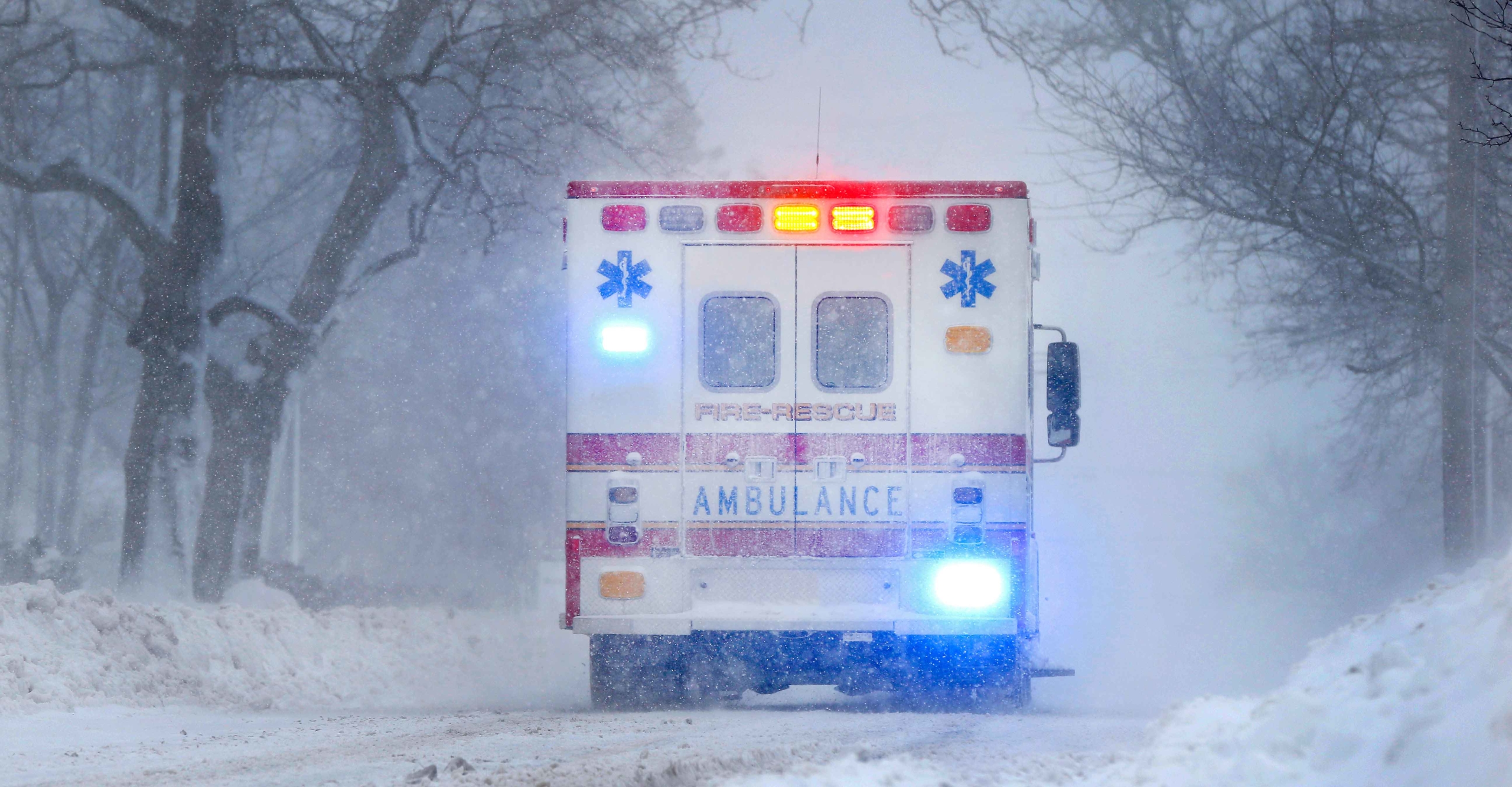Driving any vehicle during the winter months puts many drivers on edge.
Knowing how to avoid the risks associated with driving in adverse weather conditions requires a certain mindset ambulance operators eventually learn on the job.
Driving on icy roads with whiteout conditions can make the job of an ambulance driver that much more nerve racking — and it’s not something you can learn in a textbook.
In this post we share winter driving tips that can help keep your precious cargo safe when threatening winter weather puts your driving skills to the test.
Take winter driving tips seriously
The National Highway Traffic Safety Administration (NHTSA) collects ambulance crash data to improve ground ambulance safety. The agency estimated an average of 4,500 motor vehicle traffic crashes with ambulances, per year, between 1992 and 2011.
Here’s the breakdown on that crash data, reported in the 2014 NHTSA and Ground Ambulance Crashes Report:
- 65% resulted in property damage only
- 34% resulted in an injury/injuries
- <1% resulted in a fatality/fatalities
Avoid speeding
Education Manager Jeremy Gassert, NRP, an instructor with Relias who has worked in EMS for 20 years highlighted some common sense winter driving tips. Before heading out, for example, Gassert suggests knowing the road conditions so you’re better prepared when road conditions change.
If you drive an ambulance, you are probably used to driving at higher speeds. But that’s not free license to go full throttle and race off to an accident scene, especially during inclement weather.
When road conditions are less than desirable, such as when it’s slick, snowy or poor visibility, Gassert said speeding is not the best option.
“The best strategy is to take your time,” he said. “I’ve yet to see a study on the benefits of driving at an increased rate of speed.”
Know how your vehicle handles
When making the transition from dry roads to wet ones during the winter months, remember that changing road conditions will affect how the rig handles. This winter safety tip is important whether you’re driving on a steep downhill grade or flat roadway.
“Knowing the characteristics of the vehicle you’re operating is important. Understand that the ambulance is not your Honda Civic,” he said. “It’s four times heavier, it does not accelerate or stop as easily or quickly as a passenger vehicle.”
Keep your confidence in check
A common mistake some drivers make is they are overly confident, Gassert said.
“Assuming you’re in control can be a mistake in itself with an ambulance,” he said. “Having too much faith in your equipment may lead people to take risks they would not otherwise take.”
When driving on icy, snowy roadways, consider the degree of safety when driving 4-wheel or all-wheel drive vehicles.
Most auto experts agree both types of vehicles will outperform front-wheel or rear-wheel drive vehicles until slick conditions emerge. When drivers go too fast and lose traction, braking is a mixed bag no matter what kind of drive train you have, according to professional mechanics.
The Oklahoma Office of Management and Enterprise Services posted the following disclaimer about winter driving tips with four-wheel and all-wheel drive vehicles, stating, “All and 4-wheel drive doesn’t improve braking on a slick road, nor does it improve taking turns on ice.”
This is one reason why it’s common to see larger trucks and SUVs equipped with four-wheel and all-wheel drive spin out and end up on the side of the road, or sometimes in rollover accidents.
Ease up on lights and sirens
In snowy, icy conditions, lights and sirens won’t help much either, Gassert advises.
Lights and sirens are better in heavy traffic, said Gassert, not snowy conditions or late at night when few drivers are on the road.
“If the speed limit is 80 mph, like in some parts of Texas, but you cannot do that speed, you should not have lights and sirens on in the first place,” Gassert said, adding that road conditions dictate how fast you can go.
No matter which emergency vehicle you’re driving, the rules of the road always apply. This means all drivers must stay in control of their vehicles at all times, use good judgement and apply common sense.
Winter driving tips for ambulances
According to the NAEMT Ambulance Speed Guidelines Best Practices:
- Ambulances should not exceed the posted speed limit by more than 10 mph
- Speed should be moderated to avoid a roll over in a turn or curve
- Speed should be reduced when the curbside tires leave the paved or elevated surface of a road to reduce the likelihood of improperly returning the vehicle to the paved surface
In extreme weather conditions, such as driving in snow or icy conditions, the NAEMT also recommends:
- Keeping windows and windshields clear
- Obtaining maximum visibility by turning on low-beam headlights and windshield wipers
- Driving slowly and staying farther behind the vehicle ahead of yours
- Slowing to a crawl on ice and decreasing speed when approaching curves and intersections
- Avoiding fast turns and quick stops


